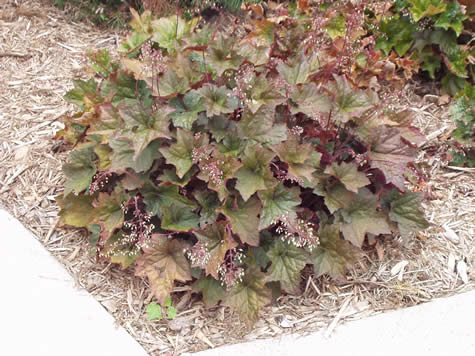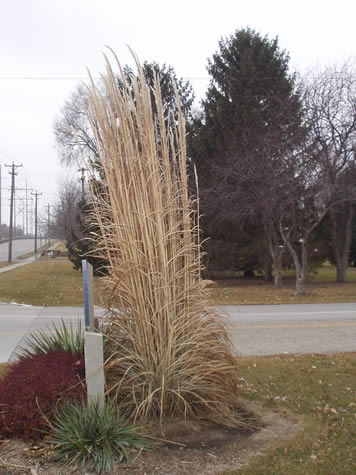Get Ready for Winter!
After one of the most beautiful displays of fall foliage in recent memory, it’s now time to start preparing for winter. Here are a few tips to help you get your plants ready for what this harsh season brings.
Extra mulch

Newly planted coralbells often benefit from extra mulch.
We highly recommend that you surround your garden plants with mulch year round. A 2-3 inch layer does wonders for trees, shrubs, and perennials. That said, we usually don’t recommend putting down more than 3 inches of mulch because doing so can actually do more harm than good.
There is at least one notable exception to our “3 inch rule.” Newly planted perennials often benefit when mulch is mounded over them during the winter. This can help prevent frost-heaving. (Frost-heaving is when repeated freezing and thawing raises a plant’s root ball above the surrounding soil. This often kills perennials.) Don’t go overboard. A 6 inch high mound is plenty. Be sure to remove the mulch sometime before mid-March.
Protect your trees
If you haven’t already done so, it’s essential to protect the trunks of your recently planted trees from animals. Deer are probably the most notorious tree killers. Starting as early as mid-September, young bucks purposefully seek out small trees that they can use to rub the velvet off of their antlers. This almost always causes irreparable damage.
Deer are by no means the only threat to young trees. Rabbits and mice also commonly damage tree trunks in winter by eating away at bark. The bark contains the tree’s vascular system so even a small amount of damage to the trunk is enough to kill a tree.
For these reasons, any tree with a trunk diameter smaller than 4 inches should be protected. Ordinary drain tile (preferably white to reflect light) works very well for this. Simply cut the tile length-wise and carefully place it over the trunk of your tree to a height of about 4 feet. Be sure to remove the tile in March.
Trim perennials and grasses

Hardy pampas grass is a welcome addition to the winter landscape.
Finally, we’ll address one of the most commonly asked questions at the nursery: When should I trim my perennials and grasses?
You can trim foliage from perennials and grasses anytime after they lose their green color in fall. However, this doesn’t necessarily need to be a fall task. The tan foliage of ornamental grasses is often an appealing addition to winter landscapes. As long as you remove the dead foliage before new growth appears in spring, your plants will be fine.




